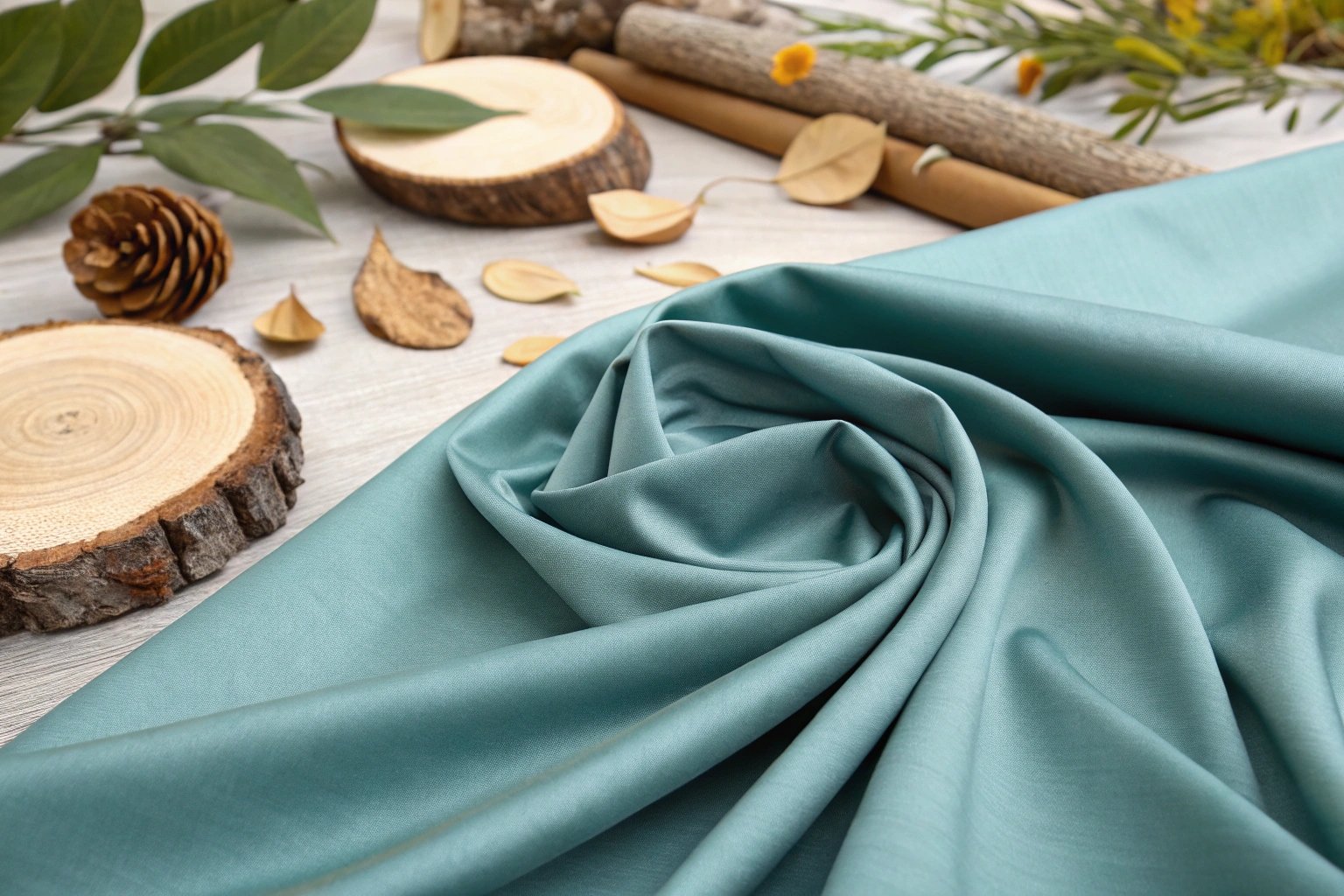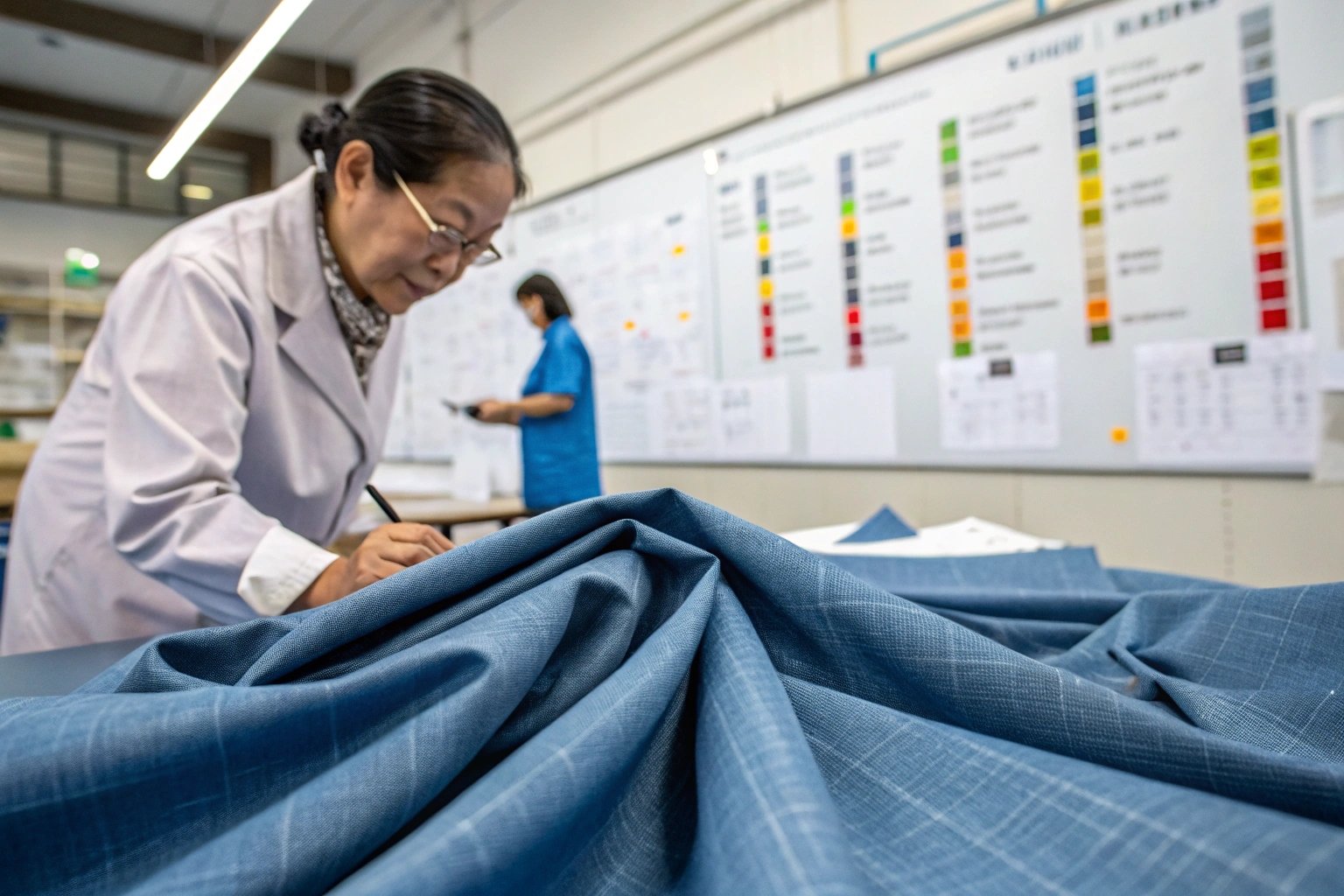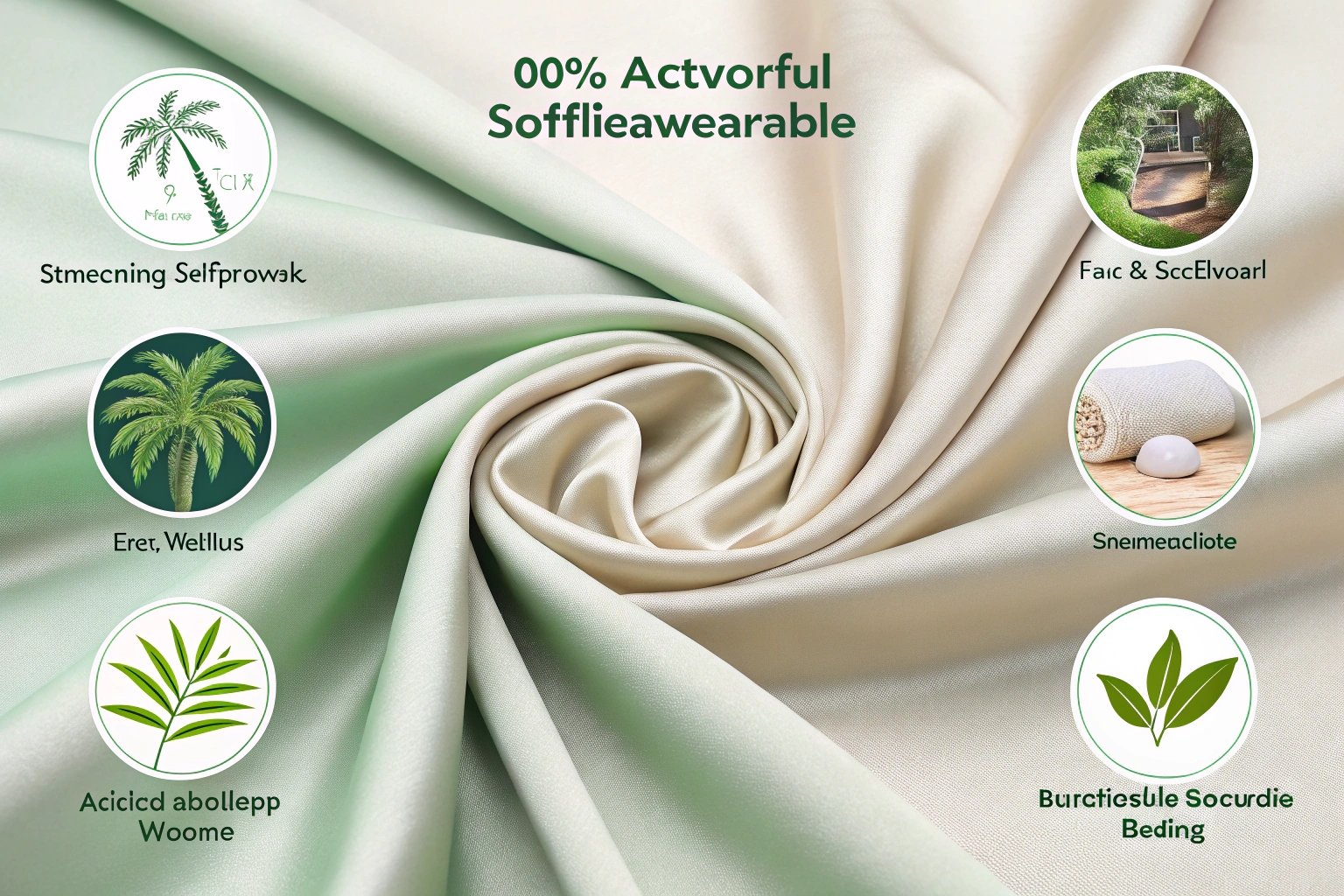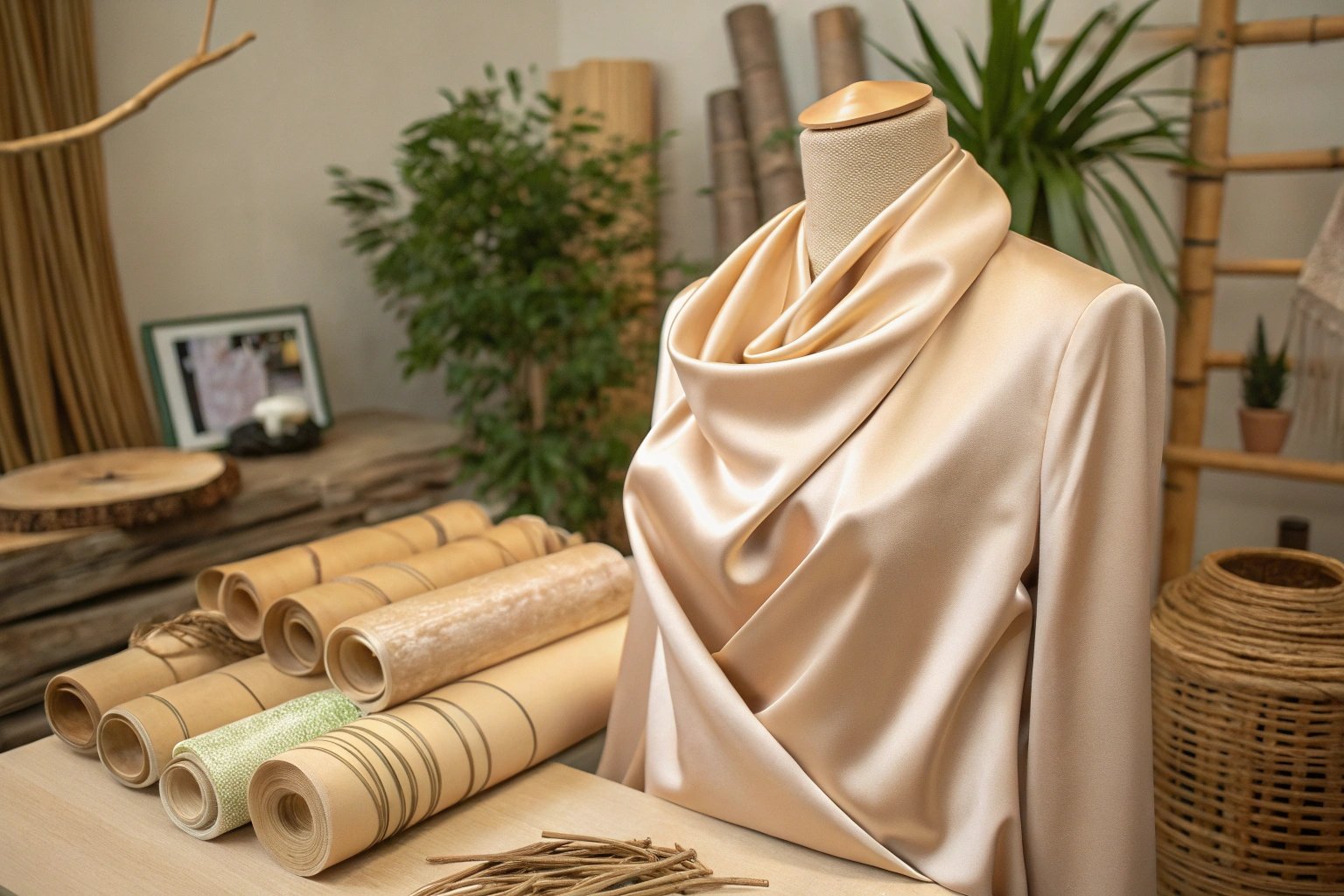As the demand for sustainable, high-performance textiles continues to grow, Tencel fabric—specifically Tencel™ Lyocell and Modal fibers—has emerged as a leading choice for brands seeking to balance luxury, function, and environmental responsibility.
Tencel is a branded lyocell fiber derived from wood pulp, known for its breathability, moisture-wicking capabilities, silky hand-feel, and low environmental footprint—making it an ideal choice for eco-conscious fashion, bedding, and even medical textiles.

This regenerated cellulose fiber is produced using a closed-loop solvent system, where over 99% of the non-toxic solvent is recovered and reused. Tencel is not only biodegradable, but it also offers superior fabric performance—soft to the touch, highly breathable, and naturally anti-bacterial.
What is the disadvantage of Tencel fabric?
Despite its impressive sustainability and comfort properties, Tencel has a few limitations that brands must consider before adopting it into their product lines.
Tencel’s primary disadvantages include high production cost, limited wrinkle resistance, and a tendency to shrink if not properly treated—all of which may affect its adoption in mass-market collections.

Key Limitations
| Disadvantage | Explanation |
|---|---|
| Higher Cost | Tencel is more expensive than cotton or polyester due to eco-friendly processing. |
| Wrinkle-Prone | The fine, soft fibers are less structured, making garments prone to wrinkling. |
| Shrinkage Risk | Without pre-shrinking or blending, garments may shrink when washed. |
| Care Sensitivity | Requires gentle washing or dry-cleaning, limiting care convenience. |
| Weave Limitations | Not suitable for very rigid or tailored structures. |
These limitations can be addressed through fabric blends (e.g., Tencel + cotton or Tencel + elastane), finishing processes (e.g., enzyme wash, wrinkle-resistant treatment), and targeted usage in product categories that align with Tencel’s softness and drape.
What are the qualities of Tencel fabric?
Tencel fabric is engineered to offer both performance and comfort. Its natural origin and technical characteristics make it suitable for premium fashion, activewear, sleepwear, bedding, and beyond.
Tencel is known for its exceptional softness, moisture management, breathability, biodegradability, and silky drape—making it ideal for skin-contact applications across seasons.

Core Functional Properties
| Property | Benefit to End Product |
|---|---|
| Moisture-Wicking | Absorbs 50% more moisture than cotton, keeping the skin cool and dry. |
| Breathability | Microscopic fibrils enhance airflow, making it ideal for summer garments. |
| Softness | Surface is smoother than cotton or wool, reducing skin friction and irritation. |
| Strength (Wet/Dry) | Maintains tensile strength even when wet—key for bedding and activewear. |
| Anti-Bacterial | Inhibits bacterial growth without chemical treatments, offering odor control. |
| Eco-Friendliness | Derived from FSC-certified wood, processed in closed-loop systems. |
In addition, Tencel accepts dye deeply and evenly, allowing for rich, saturated colors with excellent colorfastness—ideal for fashion collections with tonal depth.
What does 100% Tencel mean?
When a label states “100% Tencel,” it typically refers to the use of 100% Tencel™ Lyocell fibers in the textile. This indicates a mono-material fabric that embodies all of the fiber’s natural benefits without dilution from other synthetics or blends.
100% Tencel means the fabric is composed entirely of regenerated cellulose fibers from sustainably harvested wood, with no added polyester, cotton, or spandex—offering optimal biodegradability and comfort.

Applications of Pure Tencel
- Premium Sleepwear: For customers seeking soft, breathable, and non-irritating fabrics.
- Resort Wear & Dresses: Provides luxurious drape and breathability, perfect for warm climates.
- Luxury Bed Linen: Offers a silky touch and thermal regulation for upscale bedding.
- Medical Textiles: Safe, skin-friendly, and resistant to microbial buildup.
While 100% Tencel fabric offers unparalleled softness and sustainability, blending it with other fibers (e.g., cotton, hemp, recycled polyester) can reduce cost and improve resilience—particularly in performance or high-wear categories.
Is Tencel a good fabric?
Tencel is more than just “good”—for many modern applications, it’s an optimal choice that merges technical functionality with sustainability. Especially for brands positioned in premium or responsible fashion segments, Tencel communicates value, transparency, and innovation.
Tencel is an excellent fabric for brands seeking to offer garments that are breathable, biodegradable, luxuriously soft, and aligned with eco-conscious consumer values.

Advantages for Brand Strategy
- Sustainability Messaging: Tencel supports transparent sustainability claims, certified by Lenzing, with verified carbon footprint data and circularity practices.
- Customer Experience: High moisture absorbency and breathability improve long-wear comfort, making it ideal for next-to-skin categories.
- Design Flexibility: Works in knits and wovens, from jersey tees to twill trousers and sateen sheets.
- Multi-Market Viability: Tencel performs well in fashion, home, and wellness industries, offering cross-category opportunities.
Brands using Tencel can communicate both high technical quality and eco-integrity, reinforcing premium positioning. While initial material costs are higher, consumers—especially in European and North American markets—are willing to pay more for environmentally responsible comfort and performance.
Engineering Tencel into Market-Ready Products
To fully unlock Tencel’s potential, product developers should consider fiber blending, fabric finishing, and garment construction strategies that align the fiber’s characteristics with target market needs.
Use Case Engineering Examples
| Segment | Construction Strategy | Notes |
|---|---|---|
| Summer Apparel | 100% Tencel twill or plain weave, enzyme washed | Lightweight, cooling, luxurious finish |
| Yoga & Athleisure | Tencel + elastane jersey with brushed finish | Combines drape and stretch for soft compression |
| Formalwear | Tencel + cotton shirting with mercerization | Elegant structure with enhanced hand feel |
| Bed Linen | 100% Tencel sateen with calendared finish | Silky, breathable, and sustainable |
| Towels | Tencel + cotton terry with anti-bacterial coating | Ultra-soft, fast-drying, odor-resistant |
Each product category can benefit from Tencel’s core features—but thoughtful application of structure, blend, and finishing is essential to achieve commercial and aesthetic goals.
Conclusion
Tencel fabric offers a powerful blend of eco-friendly credentials and next-level comfort. It’s ideal for brands looking to future-proof their product lines with sustainable innovation. Whether used in fashion, home, or wellness categories, Tencel delivers a luxurious experience backed by environmental performance—and with the right application strategy, it can be a competitive advantage in the growing green economy.

